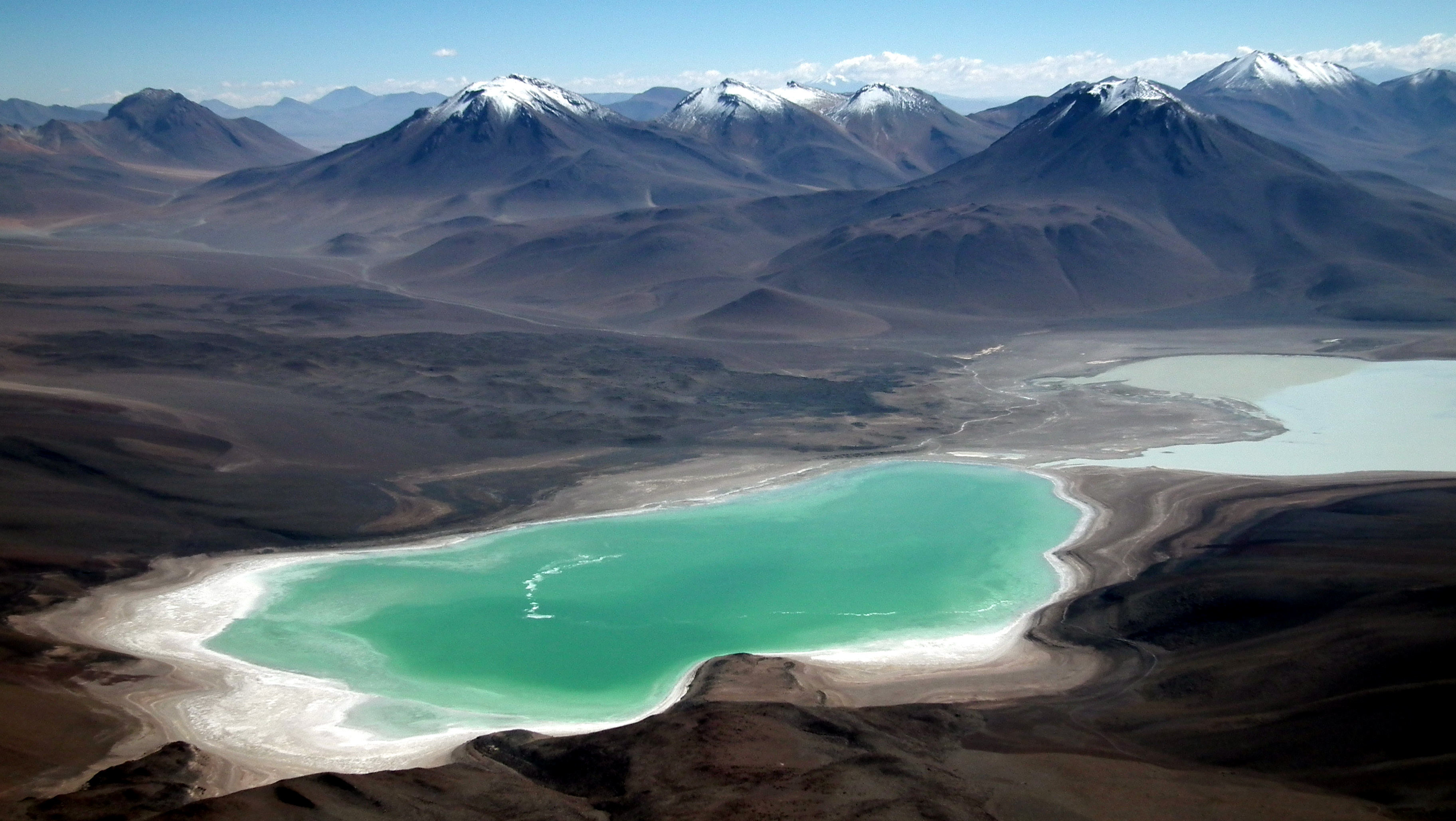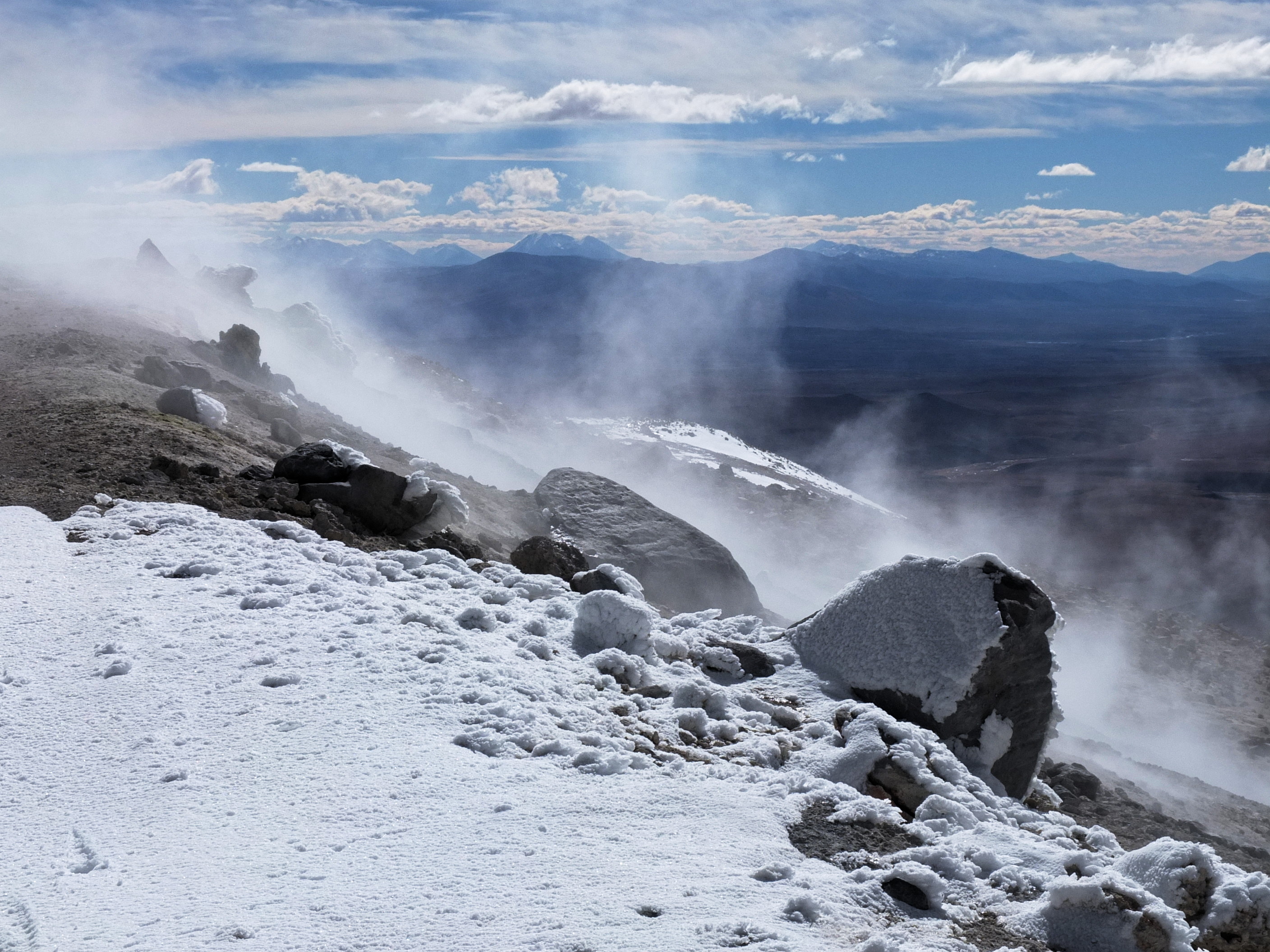|
Mount Nelly
Nelly (Spanish language, Spanish ''Cerro Nelly'') is a stratovolcano in the Andes located in the Cordillera Occidental (Bolivia), Cordillera Occidental of Bolivia, about 5,676 m (18,622 ft) high. It is situated within the Eduardo Avaroa Andean Fauna National Reserve, north east of the Licancabur volcano, Laguna Verde (Bolivia), Laguna Verde and Laguna Blanca (Bolivia), Laguna Blanca and next to Mount Mount Laguna Verde, Bolivia, Laguna Verde in the Potosí Department, Sur Lípez Province, San Pablo de Lípez Municipality, Quetena Grande Canton. See also *List of mountains in the Andes * Celeste Lake, Laguna Celeste * Colorada Lake, Laguna Colorada * Hedionda Lake (Sud Lipez), Laguna Hedionda * U ...[...More Info...] [...Related Items...] OR: [Wikipedia] [Google] [Baidu] |
Bolivia
Bolivia, officially the Plurinational State of Bolivia, is a landlocked country located in central South America. The country features diverse geography, including vast Amazonian plains, tropical lowlands, mountains, the Gran Chaco Province, warm valleys, high-altitude Andean plateaus, and snow-capped peaks, encompassing a wide range of climates and biomes across its regions and cities. It includes part of the Pantanal, the largest tropical wetland in the world, along its eastern border. It is bordered by Brazil to the Bolivia-Brazil border, north and east, Paraguay to the southeast, Argentina to the Argentina-Bolivia border, south, Chile to the Bolivia–Chile border, southwest, and Peru to the west. The seat of government is La Paz, which contains the executive, legislative, and electoral branches of government, while the constitutional capital is Sucre, the seat of the judiciary. The largest city and principal industrial center is Santa Cruz de la Sierra, located on the Geog ... [...More Info...] [...Related Items...] OR: [Wikipedia] [Google] [Baidu] |
Laguna Verde (Bolivia)
__NOTOC__ Laguna Verde (Spanish for "green lake") is a salt lake in an endorheic basin, in the southwestern Altiplano in Bolivia. It is located in the Sur Lípez Province of the Potosí Department. It is close to the Chilean border, at the foot of the volcano Licancabur. Geography The Laguna Verde is a lake at elevation. It covers an area of and has a depth of , and a narrow causeway divides it into two parts. It is at the southwestern extremity of the Eduardo Avaroa Andean Fauna National Reserve and Bolivia itself. It has mineral suspensions of arsenic and other minerals which renders colour to the lake waters. Its color varies from turquoise to dark emerald depending on the disturbance caused to sediments in the lake by winds. In the backdrop of the lake there is the inactive volcano Licancabur of in elevation, which is a nearly perfect cone. The shorelines west and east of the lake have different characteristics, with the western and southern shores eroded into volcanoes ... [...More Info...] [...Related Items...] OR: [Wikipedia] [Google] [Baidu] |
Uturunku
Uturuncu is a dormant volcano in the Sur Lípez Province of Bolivia. It is high, has two summit peaks, and consists of a complex of lava domes and lava flows with a total volume estimated to be . It bears traces of a former glaciation, even though it does not currently carry glaciers. Volcanic activity took place during the Pleistocene epoch and the last eruption was 250,000 years ago; since then Uturuncu has not erupted but active fumaroles occur in the summit region, between the two summits. The volcano rises within the Altiplano–Puna volcanic complex, a larger province of large volcanoes and calderas which over the last few million years (mya) have emplaced about of ignimbrites in sometimes very large eruptions. Underneath it lies the so-called Altiplano–Puna magmatic body, a large sill formed by partially molten rocks. Starting in 1992, satellite observations have indicated a large area of regional uplift centered on Uturuncu, which has been interpreted as an in ... [...More Info...] [...Related Items...] OR: [Wikipedia] [Google] [Baidu] |
Hedionda Lake (Sud Lipez)
Laguna Hedionda may refer to: * Laguna Hedionda (Sud Lípez), a lake in the mountains of Potosí Department, Bolivia * Laguna Hedionda (Nor Lípez), a saline lake in the mountains of Nor Lípez Province, Potosí Department, Bolivia {{geodis ... [...More Info...] [...Related Items...] OR: [Wikipedia] [Google] [Baidu] |
Colorada Lake
__NOTOC__ Laguna Colorada (''Red Lagoon'') is a shallow salt lake in the southwest of the altiplano of Bolivia, within Eduardo Avaroa Andean Fauna National Reserve and close to the border with Chile, notable for the reddish color of its waters. Contents The lake contains borax islands, whose white color contrasts with the reddish color of its waters, which is caused by red sediments and pigmentation of some algae. Geography Laguna Colorada is part of the Los Lípez (formerly Laguna Colorada) Ramsar wetland. It was listed as a " Ramsar Wetland of International Importance" in 1990. On, July 13, 2009, the site was expanded from 513.18 to to include the surrounding high Andean endorheic, hypersaline and brackish lakes and associated wetlands (known as bofedales). Fauna James's flamingos abound in the area. It is also possible to find Andean and Chilean flamingos, but in lesser quantities. See also * Laguna Verde, a nearby salt lake notable for its green coloration * Lagu ... [...More Info...] [...Related Items...] OR: [Wikipedia] [Google] [Baidu] |
Celeste Lake
__NOTOC__ Laguna Celeste is a lake of Bolivia in the Sur Lípez Province, Potosí Department Potosí (; Southern Quechua, Quechua: ''P'utuqsi''; Aymara language, Aymara: ''Putusi'') is a Departments of Bolivia, department in southwestern Bolivia. Its area is 118,218 km2 and its population is 856,419 (2024 census). The capital is the .... At an elevation of 4529 m, its surface area is 2.3 km2. References Lakes of Potosí Department {{Potosí-geo-stub ... [...More Info...] [...Related Items...] OR: [Wikipedia] [Google] [Baidu] |
List Of Mountains In The Andes
A sortable list of mountains above 4,000 metres in the South American Andes. Considerations The list is an incomplete list of mountains in the Andes. There are many named and unnamed peaks in the Andes that are currently not included in this list. The dividing line between a mountain with multiple peaks and separate mountains is not always clear (see Highest unclimbed mountain). The table below lists the summits with at least 400m prominence. List There are one hundred 6000m peaks in the Andes and nearly 900 peaks over 5000 m. {, {, class="wikitable sortable" border="0" align="top" class="sortable wikitable" style="background:#ffffff" , + align="center" style="background:Sienna; color:white" , Mountains of the Andes ! style="background:Linen; color:Black" width="60px" , Elevation ! style="background:Linen; color:Black" width="200px" , Name ! style="background:Linen; color:Black" width="200px" , Range ! style="background:Linen; color:Black" width="200px" , Coordinates ! style= ... [...More Info...] [...Related Items...] OR: [Wikipedia] [Google] [Baidu] |
Mount Laguna Verde, Bolivia
Mount is often used as part of the name of specific mountains, e.g. Mount Everest. Mount or Mounts may also refer to: Places * Mount, Cornwall, a village in Warleggan parish, England * Mount, Perranzabuloe, a hamlet in Perranzabuloe parish, Cornwall, England People * Mount (surname) * William L. Mounts (1862–1929), American lawyer and politician Computing and software * Mount (computing), the process of making a file system accessible * Mount (Unix), the utility in Unix-like operating systems which mounts file systems Books * ''Mount!'', a 2016 novel by Jilly Cooper Displays and equipment * Mount, a fixed point for attaching equipment, such as a hardpoint on an airframe * Mounting board, in picture framing * Mount, a hanging scroll for mounting paintings * Mount, to display an item on a heavy backing such as foamcore, e.g.: ** To pin a biological specimen, on a heavy backing in a stretched stable position for ease of dissection or display ** To prepare dead an ... [...More Info...] [...Related Items...] OR: [Wikipedia] [Google] [Baidu] |
Laguna Blanca (Bolivia)
__NOTOC__ Laguna Blanca is a salt lake in an endorheic basin, in the Sur Lípez Province of the Potosí Department, Bolivia. It is near the Licancabur volcano. Geography The lake is at an elevation of on the Altiplano. Its surface area is 10.9 km2. The lake is long and wide. The characteristic white colour of the water, that gave the lake its name, is caused by the high amount of minerals suspended in it. Only a narrow corridor separates Laguna Blanca from the smaller Laguna Verde (Bolivia), Laguna Verde. Both are within the Eduardo Avaroa Andean Fauna National Reserve. In the past, Laguna Blanca was much larger; at least 45 meters higher than today and extending far east past its current shore. Having reached a peak water level 13,240 years before the present, Laguna Verde was then merged with Laguna Blanca. See also *Laguna Verde (Bolivia) — a salt lake also in Eduardo Avaroa Andean Fauna National Reserve *Laguna Colorada — a nearby salt lake notable for its red ... [...More Info...] [...Related Items...] OR: [Wikipedia] [Google] [Baidu] |
Licancabur
Licancabur () is a prominent, stratovolcano on the Bolivia–Chile border in the Central Volcanic Zone of the Andes. It is capped by a wide summit crater which contains Licancabur Lake, a Volcanic crater lake, crater lake that is among the highest lakes in the world. There are no glaciers owing to the arid climate. Numerous plants and animal species live on the mountain. The volcanoes Sairecabur and Juriques are north and east of Licancabur, respectively. Licancabur formed on top of ignimbrites produced by other volcanoes and it has been active during the Holocene. Three stages of lava flows emanated from the edifice and have a young appearance. Although no historical eruptions of the volcano are known, lava flows extending into Laguna Verde (Bolivia), Laguna Verde have been dated to 13,240 ± 100 before present and there may be residual heat in the mountain. The volcano has primarily erupted andesite, with small amounts of dacite and basaltic andesite. Several archaeological ... [...More Info...] [...Related Items...] OR: [Wikipedia] [Google] [Baidu] |
Potosí Department
Potosí (; Southern Quechua, Quechua: ''P'utuqsi''; Aymara language, Aymara: ''Putusi'') is a Departments of Bolivia, department in southwestern Bolivia. Its area is 118,218 km2 and its population is 856,419 (2024 census). The capital is the city of Potosí. It is a mostly barren, mountainous region with one large plateau to the west, where the largest Salt pan (geology), salt flat in the world, Salar de Uyuni, is located. Cerro Rico, Cerro Potosí was the richest province in the Spanish Empire, providing a great percentage of the silver that was Spanish treasure fleet, shipped to Europe. Potosi is also the location of the San Cristóbal mine (Bolivia), San Cristóbal silver, zinc and lead mines, developed by the US company Apex Silver Mines Limited of Colorado and sold in November 2008 to the Japanese Sumitomo Corporation. History In March 2023, social organisations in four regions of Potosí, with the support of regional MAS-IPSP lawmakers, called for a strike spannin ... [...More Info...] [...Related Items...] OR: [Wikipedia] [Google] [Baidu] |
Eduardo Avaroa Andean Fauna National Reserve
The Eduardo Avaroa Andean Fauna National Reserve (''Reserva Nacional de Fauna Andina Eduardo Avaroa''; Spanish acronym: REA) is located in Sur Lípez Province. Situated in the far southwestern region of Bolivia, it is the country's most visited protected area. It is considered the most important protected area in terms of tourist influx in the Potosí Department. Located at an altitude between and in Bolivia, it extends over an area of and includes the Laguna Colorada National Wildlife Sanctuary. Categorized under IUCN Category IV, it is primarily for the protection of birds that inhabit the different lagoons in the reserve. The reserve protects part of the Central Andean dry puna (oligothermic) ecoregion. The reserve's major attractions are erupting volcanoes, hot springs, geysers, lakes, fumaroles, mountains and its three endemic species of flamingos in particular. History Established in 1973, the national park is named after Eduardo Avaroa (1838–1879), the Bolivian wa ... [...More Info...] [...Related Items...] OR: [Wikipedia] [Google] [Baidu] |




